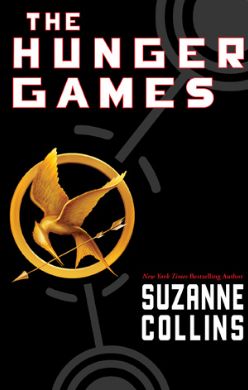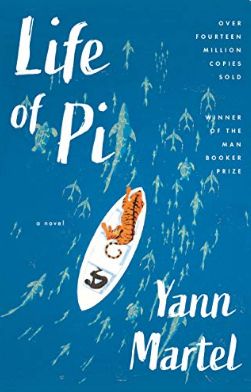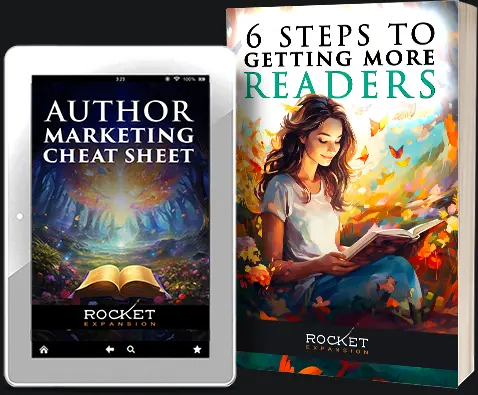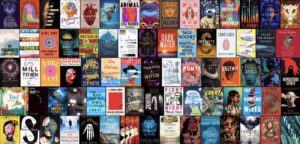How To Write A Book Synopsis To Attract Publishers & Agents

There are millions of books in the world and you have to convince publishers, agents, and readers that yours is worth picking up.
Sounds like a scary task to tackle right?
One of the ways you can go about it is by producing a cracking book synopsis that shows agents and publishers exactly why your story is amazing.
To help you get it right, we’re going to show you how to write a synopsis that tempts publishers to give you your golden ticket: a publishing deal.
What Is A Synopsis Of A Book
A book synopsis is a slightly boring business document that conveys the major plot points in your story, from beginning to end.
We call it boring because it’s far away from any joys you’d get from writing a novel or even an author newsletter.
This is because it’s meant for agents and publishers. A book synopsis is used to help an agent or publisher understand your story and determine if it’s worth taking a chance on.
Does your story fit into the type of books they like to sell? Your synopsis will hopefully answer that question with a resounding yes.
Then they’ll ask you for the whole manuscript, putting you one step closer to getting your book published.
But even if you’re not venturing down the traditional publishing path, a book synopsis can be useful for you.
Self-publishing authors can use the synopsis of their book to pick up any issues with the story. For example, meandering character arcs, plot holes, flimsy structures, etc.
Some agents and publishers may not ask for a book synopsis, so you might not need to worry about it now…but writing one gives you an introspective look at the work you want to publish and iron out what isn’t working.
What Makes A Synopsis Different?
If a synopsis is meant to convince the person reading it to read the book, why is the blurb on the back cover of your book any different?
Your book blurb contains more marketing copy and aims to give as little story away as possible while still enticing the reader to buy the book.
Your book synopsis has very minimal marketing language and there are few limits when it comes to spilling the beans on what happens in your story. You usually have to reveal your major plot twists and the ending.
This is because a plot twist in a blurb will spoil the book for the reader, but a plot twist in a synopsis will show whether your story has enough appeal to be published.
Note: Both agents and publishers know that what you’re sharing in your book synopsis and manuscript is not set in stone. Once a publishing deal is struck, more writing and editing will be done to make your book market-ready.
When Do You Need a Book Synopsis?
Once you’re happy with your manuscript, and you think your story is ready for the next step, that’s when you write your book synopsis.
Along with your book synopsis, you’ll need a query letter and sample chapters from your manuscript.
A query letter aims to pitch your book idea. The book synopsis goes into more detail on what the story is about.
Lastly, the sample chapters give the reader a taste of how the story is written.
Or, in the case of a non-fiction book, you may want to see if it’s worth writing your book at all by approaching an agent or publisher with a book proposal.
In this scenario, your book synopsis would need to explain how your book will help the reader, who the target audience is, why you’re the right person to write the book, and what topics will be covered.
Elements of a Book Synopsis
There are 4 main elements you need to include in your book synopsis that will paint a clear picture for the publisher or agent:
- The Narrative Your Novel Follows: This is the bones of your story or the important plot points.
- Exciting Conflict: The driving force that moves the story from A to B, which keeps readers invested to find out what happens.
- Powerful Characters: Your protagonist and main characters who directly impact the main plot.
- Gripping Hook: Highlight what makes your book appealing; show why your story needs to be told.
Tips for Writing a Synopsis
How do you convey the 4 elements above? Before we get to the nitty-gritty, we’ve listed a few tips for you to keep in mind before tackling your book synopsis:
Keep it in third person
To make sure your book synopsis is clear, professional, and to the point, it needs to be written in third person.
This applies to stories told from the first perspective too, because it will be harder to summarize and depict events with your main character’s voice – not to mention harder to read and engage with from an agent’s perspective.
Write in present tense
To further ensure the publisher or agent stays captivated by your story, it must be in the present tense.
This is to ensure events feel like they’re happening as the reader goes through the story.
Highlight character names
You don’t want your characters to get lost in your book synopsis. It’s not an insanely long body of text, but it is possible.
To avoid this, either Bold or CAPS your characters’ names when you first mention them to give the reader the full impact of their entry.
Label your story’s genre
Identify the genre your novel is in and mention it so that the reader has all the information up front.
You may have written with a few genres in mind, but you should still pick 1 or 2 major genres that appear in your story.
Watch your language
The purple prose and flowery literature need to be far away from a book synopsis. Not only does it rack up the word count, but it also makes it complicated to read.
And clarity is vital in a book synopsis.
But that doesn’t mean you need to throw verbs and adjectives away too. You need to cut to the chase but you must make sure you’re recapping your story in an energetic way.
So, be straightforward but use punchy verbs, adjectives, and adverbs to add some power to the narrative you’re describing.
Show off your tone and voice
If you’re able to, try to let the tone of the story and your voice as the author come through.
It’s harder to do in a book synopsis because it’s not a literary masterpiece but a simple document that recounts the story.
But if you’re able to sneak tone and voice in without adding too many words, it could tempt the reader to learn more – like in the form of a manuscript wink, wink!
How long should a synopsis be
A book synopsis can range from 500 to 1000 words.
The length will depend on how long your novel is as well as the submission requirements of the agent or publisher.
To start, we recommend having 2 book synopsis documents, one that is about 1 page in length, and the other can be about 2-3 pages. This way you’re prepared for most scenarios.
But you still need to make sure you adhere to the set requirements, or your submission package may be thrown out without even being looked at.
Format your book synopsis
Open your book synopsis draft and make sure it follows the format below:
- Title page: [Book Name] Synopsis, for example, Rules of Redemption Synopsis
- Underneath the title: By Author Name, For example, By T.A. White
- Font Type: Times New Roman or Arial
- Font size: 12 point
- Line spacing: Single spaced for 1.5 page and double spacing for 2 or more pages
- Margin size: 1-inch
- Paragraphs: Indented
- Page numbers: Top right-hand side
Note: The above is the standard format most use for a book synopsis, but make double sure that the agent’s submission requirements are the same as this or adjust to their format. We’re not letting format issues stop a book from being published!
Structure of the novel
It may be overwhelming to take your entire novel and condense it into 1-2 pages of text, so we vote against condensing your story at all.
Instead, you should map out the major events in your novel and expand on them in your synopsis.
But we know some book structures are not as easy to outline. If your story is told from multiple POVs you can either pick the most important character that is involved in all major conflicts or write the novel synopsis in the same structure as your novel, mentioning when each character comes in.
Note: If you have an experimental timeline or concept, try your best to explain what you aim to do with the story and explain your narrative without an A to B structure.
Using the right file name
The last tip we have for you may seem obvious but it’s surprising how many authors get this wrong!
You’re likely emailing or submitting your book synopsis online, so the file name needs to be labeled correctly.
And yes, it’s as simple as you think: title-synopsis, for example, rules-of-redemption-synopsis.
Agents have other book synopses to read through, so make sure yours is named properly so they can tell the difference.
How To Write A Synopsis
Here we are, at the aforementioned nitty gritty. Let’s just jump straight in, shall we?
Outline your story
Fill in your story’s details for the points below:
- Status quo: What is the current situation for the main characters? This can include the setting, the world, or the period your story takes place in.
- Inciting Incident: What is the catalyst for your plot to kick off? What sets the main character off on their new journey?
- Plot development: This section will be all the story elements leading up to the biggest challenge in the book. This may be your main character’s arc, the main action-packed events, plot twists, and any plot details that are noteworthy.
- Climax: Your story reaches the tipping point where the main character must overcome their biggest conflict yet, for example defeating the antagonist, conquering inner conflicts, etc.
- Resolution and ending: How does your story end? For example, is the main conflict resolved or are there more battles to come?
This outlined portion, even though it’s just a framework, should make up the majority of your word count. This means about over half of the word count should go to explaining the above stages of your book.
The rest of the word count will be used in the next sections.
Note: You can find professional synopses examples online and use those to help you navigate your own. We’ve included 2 examples below so be sure to check them out!
Flesh out characters
You’ve already included your main characters by now, but this is when you make sure all their motivations and inner conflicts are clear.
This is also where you can add more side characters or even remove some. If a character or detail about a character is important to your story’s direction and ending, it should be included.
But be sparing with what you add!
Note: To cut the word count for your characters, you can list out the description of them when you first introduce them instead of going into too much detail. For example, Harry Potter (11), small for his age – friendly, and curious, has a lightning bolt scar on his forehead.
Draft and edit
Put everything together in a neat package and you’re almost set!
Read through what you have so far and see if everything makes sense in how you’ve portrayed your story.
Check the list below to ensure you haven’t missed any important details:
- The rules and nature of your world (if you’re world-building).
- The antagonist’s role.
- The love interest.
- What will happen if the main character doesn’t succeed?
- The plot twists that greatly impact the story.
- Emotional state of your main characters.
- Why the information you’re sharing is important (for non-fiction)
Be frugal with the additions you make. Your book synopsis doesn’t have to be an exact replication of your story, but it should give the agent the gist of what happens.
You could also hand over your book synopsis to a trusted friend who has read the book. They’ll be able to give the yay or nay on whether your synopsis gives an accurate enough depiction of your novel’s events.
And remember, your first draft will certainly not be your last, so after getting your first iteration down, take a step back for a few hours or even a day. When you return to edit it, you’ll see mistakes more easily.
Note: You could hire a professional to write your book synopsis for you. You know your story better than anyone so you’re the most equipped to write the synopsis…but it shouldn’t be an issue to hire someone else to assist you either. Do what you think is best!
Book Synopsis Example
We picked out 2 book synopses examples that you’ve probably heard of. It should be easier to see why these book synopses work well since you know how these stories unfold.
Synopsis Example 1

The Hunger Games
Check out this example:
The story begins on the day of the Reaping for the 74th Hunger Games. Katniss Everdeen worries for her childhood friend Gale, who submitted his name in the Games in order to get more money for food for his family. People who are starving were often known to trade “entries” in the Games for food vouchers, which increased their chances of being chosen in the Games. Katniss’s beloved little sister, Prim, has just turned twelve and is thus eligible for the Games for the first time. Katniss assures Prim she will not be picked; however, Prim is indeed selected. Knowing Prim has little chance of survival in the Games, Katniss volunteers as tribute to save her sister.
Katniss and the male tribute, Peeta Mellark, arrive in the Capitol and train under their mentor, Haymitch Abernathy. Katniss’s skill with a bow and arrow and her daring nature gain the attention of potential sponsors, but Katniss isn’t eager to play their game. During a televised interview the night before the Games begin, Peeta tells all of Panem that he loves Katniss, which enrages Katniss as she does not believe it to be anything but a desperate attempt to gain sponsors. However, Peeta’s love later proves real.
In the arena, Katniss initially goes off on her own. Due to her skills, she is targeted by career tributes who have banded together. Eventually, the Capitol announces that tributes from the same district can both win, and Katniss decides to find Peeta. She pretends to return his affection, knowing that a star-crossed lovers’ angle will win them the favor of sponsors. When Katniss and Peeta are the only two tributes remaining, the Capitol announces it has changed its mind and one of them will have to kill the other. Katniss decides to feign a suicide attempt with Peeta via eating deadly nightlock berries; she suspects the Capitol will not want to lose both its victors. The Capitol does indeed intervene and both Katniss and Peeta are declared victors.
The novel ends with the president of Panem furious with Katniss for calling the Capitol’s bluff, Peeta hurt by Katniss’s faked affection for him in the arena, and Katniss wondering if she will ever be free to truly live the life she has worked so hard to build.
Why it works
This book synopsis of The Hunger Games does a great job of detailing the main events and getting straight to the point. And it manages to do it all in 381 words.
Katniss’ motivations and personality come through well here, drawing the reader in and helping them understand her actions and her emotional state.
Synopsis Example 2

Life of Pi
Check out this example:
A fictional author travels to India, and there he hears an extraordinary story from a man named Francis Adirubasamy. The author tracks down and interviews the story’s subject, Piscine Molitor Patel, usually called Pi, in Canada. The author writes the rest of the narrative from Pi’s point of view, occasionally interrupting to describe his interviews with the adult Pi.
Pi grows up in Pondicherry, India in the 1970s. He is named after a famous swimming pool in Paris. Pi’s father is a zookeeper, and Pi and his brother Ravi are raised among exotic wild animals. Pi’s tale frequently digresses to explain about zookeeping, animal territories, and boundaries. His father warns him of the danger of wild animals by making Pi watch a tiger eat a goat, but Pi also learns that “the most dangerous animal at a zoo is Man.”
Pi is raised culturally Hindu, but his family is generally unreligious. As a youth Pi becomes devoutly Hindu and then converts to Christianity and Islam. He practices all three religions at once, despite the protests of his parents and the religious leaders. The “Emergency” brings political turmoil to India and Pi’s parents decide to sell the zoo and move the family to Canada. They board a Japanese cargo ship called the Tsimtsum, traveling with many of the zoo animals.
There is an explosion one night and the Tsimtsum starts sinking. Pi is awake at the time, and some sailors throw him into a lifeboat. The ship sinks, leaving no human survivors except for Pi. Pi sees a tiger, Richard Parker, and encourages him to climb aboard. Pi eventually finds himself on the lifeboat with a zebra, a hyena, and Orange Juice the orangutan. The hyena kills the zebra and eats it. The hyena then fights and kills Orange Juice. Pi notices that Richard Parker is still in the boat, hiding under a tarpaulin. Richard Parker kills the hyena, leaving Pi alone with the tiger.
Pi makes a raft for himself and finds supplies in the lifeboat, and he sets about marking his territory and “taming” Richard Parker using a whistle. Pi kills and eats fish and turtles, filters seawater, and collects rainwater. Pi and Richard Parker each occupy their own territory in the lifeboat and live peacefully, though they are constantly starving.
Pi loses track of time as months pass. He remembers episodes like seeing a whale, experiencing a lightning storm, and watching a ship pass by. Pi goes temporarily blind and hears a voice talking to him. At first he thinks it is Richard Parker, but then he realizes it is another castaway who is also blind. The two discuss food and then bring their boats together. The castaway attacks Pi, intending to kill and eat him. Richard Parker kills the castaway.
Later the boat comes to a mysterious island made entirely of algae and inhabited by thousands of meerkats. Pi and Richard Parker stay there for a while and recover their health. One day Pi finds a tree with human teeth as its fruit, and he realizes that the island is carnivorous. Pi decides to leave with Richard Parker. Finally the lifeboat washes up on a beach in Mexico. Richard Parker disappears into the jungle without looking back, and Pi is rescued by some villagers.
The last section is a transcript of an interview between Pi and two Japanese officials who are trying to figure out why the Tsimtsum sank. Pi tells them his story, but they don’t believe him. He then tells them a second story, replacing the animals with humans – in this version Pi is on the lifeboat with a French cook, a Chinese sailor, and his own mother. The sailor dies and the cook eats his flesh. The cook later kills Pi’s mother, and then Pi kills the cook. The officials are horrified, but they believe this story. They note that the hyena is the cook, the zebra is the sailor, Orange Juice is Pi’s mother, and Richard Parker is Pi himself. Pi asks the officials which story they prefer, and they say the one with animals. In their final report they commend Pi for surviving at sea with a tiger.
Why it works
We think this book synopsis of Life of Pi does a great recount of the events of the novel. Even though the themes and the message of morality are not expressly written, it is felt in the descriptions of the story.
This book synopsis sticks to the main conflicts while briefly explaining some subplots that have a heavy weight on Pi – while keeping it all to 696 words.
Avoid These Common Mistakes
In the big scheme of things, your book synopsis may not make or break your shot of getting a book published.
But there are some mistakes that will deter agents and publishers from reading your book synopsis. Avoid these at all costs:
- Including too much detail about characters.
- Using too many details about the world and its rules.
- Adding irrelevant subplots.
- Interpreting the story from your perspective (for example, describing the message or theme you think the target reader should notice).
- Writing emotionless descriptions of the story’s events.
- Using rhetorical questions – it’s not a book blurb!
- Adding headings and sections (unless you need them to define when your story jumps to different timelines).
- Using dialogue.
- Adding character backstories that are unrelated to the book’s conflict.
- Using a complicated or confusing file name.
- Writing way over the word count.
What Comes Next?
Now that you’re armed with the knowledge to write a synopsis that will intrigue publishers and agents, you may think the job is almost done…
But you’re not even close! Book publishing is not a simple endeavor, and getting readers to buy your books is no easy feat.
After submitting a successful book synopsis, you may think you have crossed the finish line. But you’ll find there are more races waiting ahead.
But it’s totally worth it if you get to live out your dreams. And we can help you on your journey. Your book will one day need a home online and we know just how to create it.
With an author website! Fill in this inquiry form and we’ll see how we can help you with an online experience that stuns your readers and impresses industry professionals.

Want help with your author marketing? Get our FREE ebook and cheat sheet: 6 Steps To Getting More Readers.
By subscribing, you agree to get emails from me, Matt Ziranek. I’ll respect your privacy and you can unsubscribe any time.






